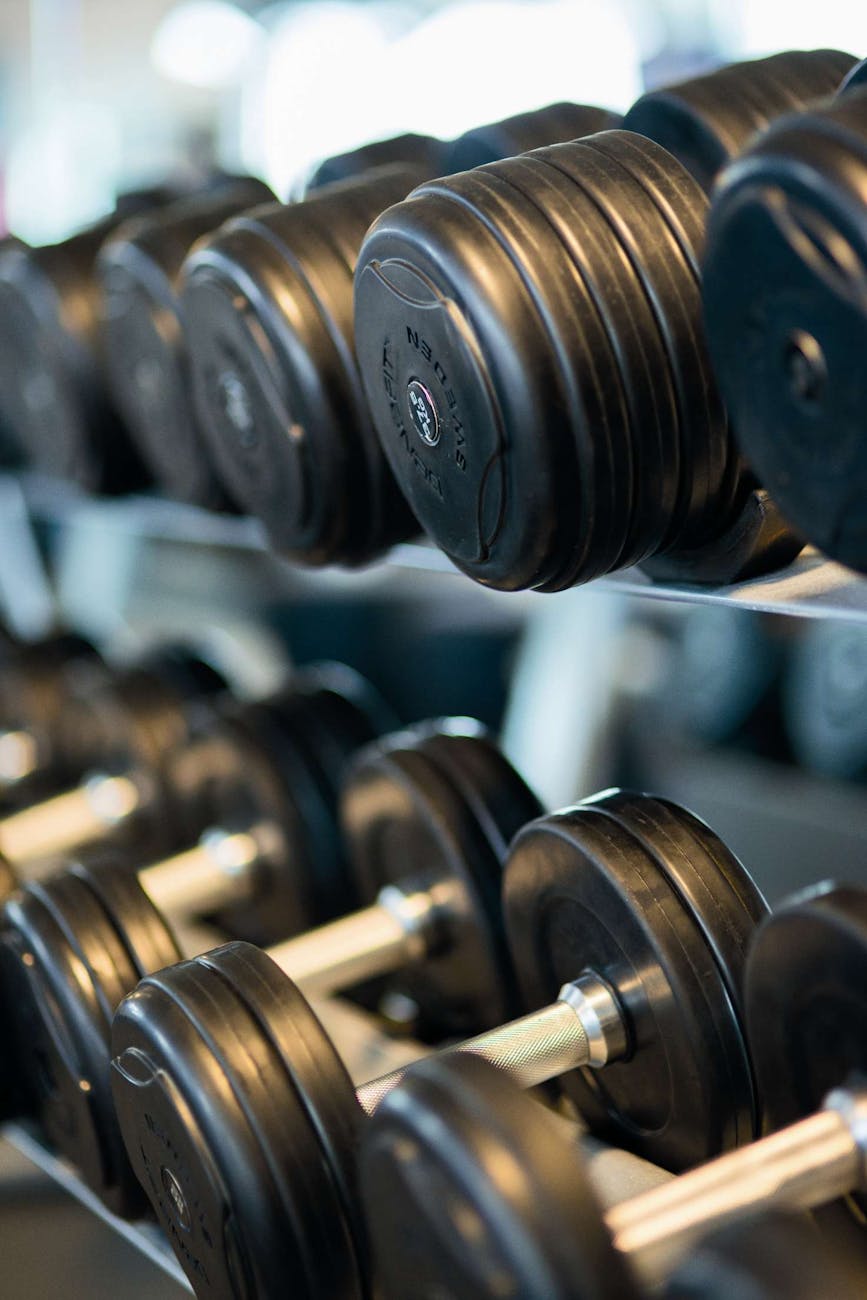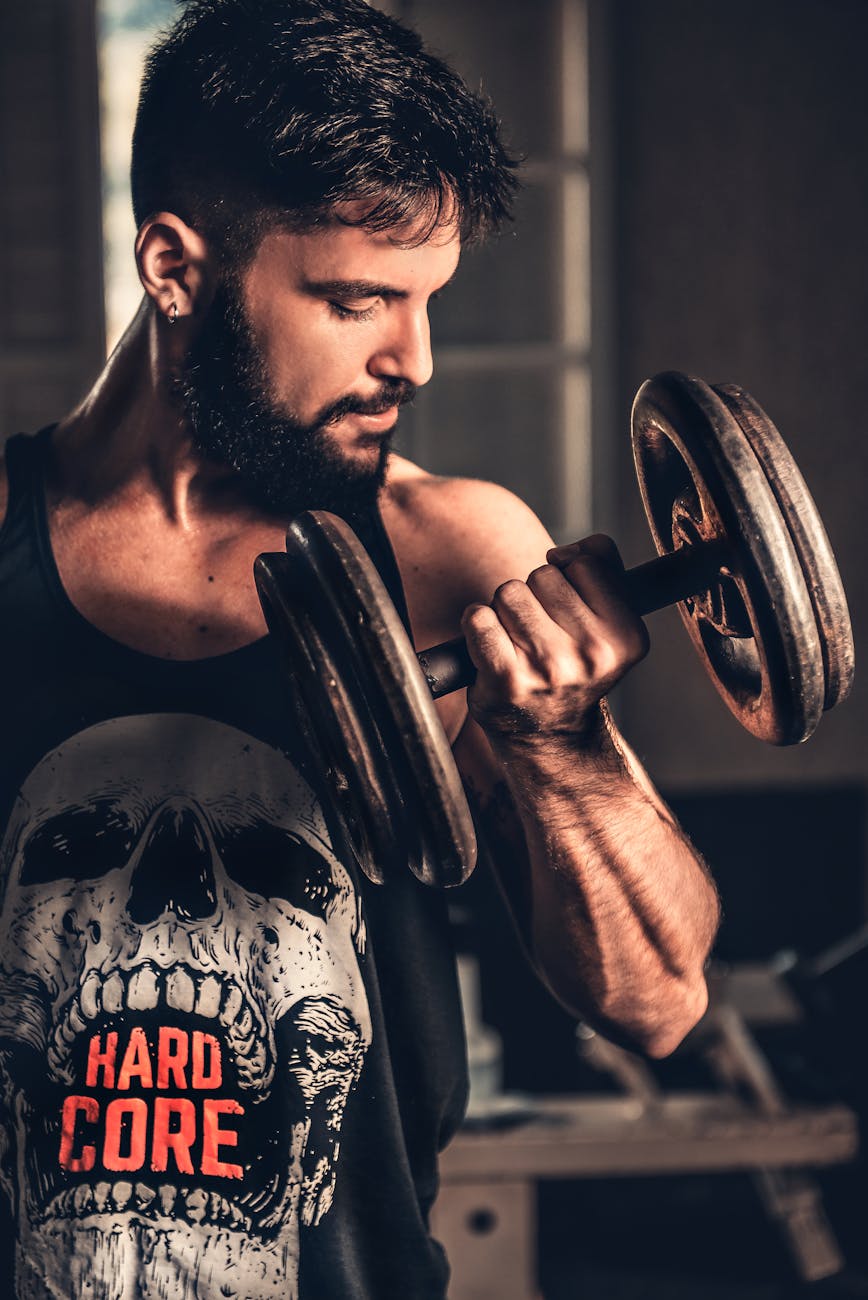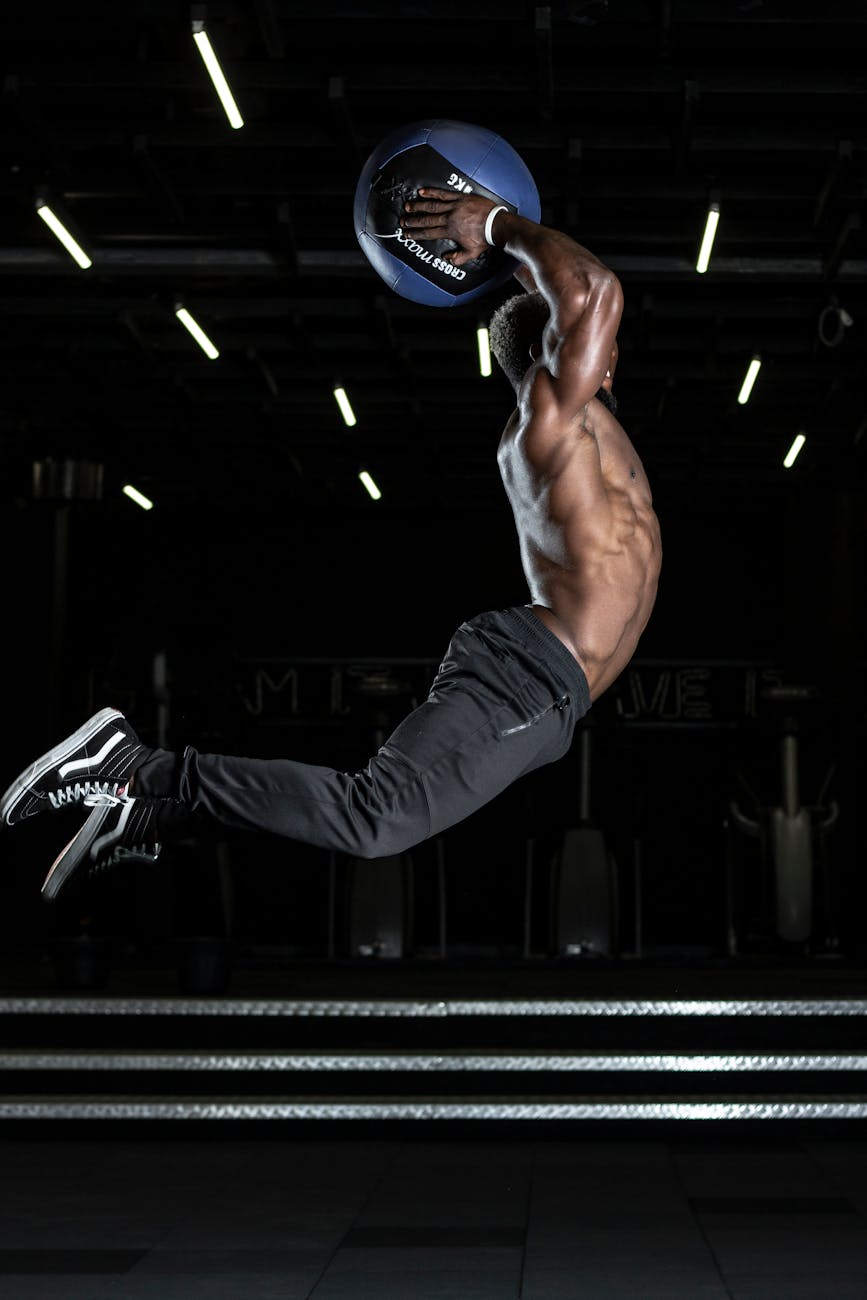Embarking on a full body workout routine can revolutionize your exercise regimen by offering a comprehensive approach to fitness that blends strength and cardio training, making it highly beneficial for beginners. These routines not only cover your entire body in a single session but also tailor to those with hectic schedules, ensuring you don’t miss out on training specific muscle groups even if a workout is skipped. Moreover, full body workouts are designed to enhance your functional strength and cardiovascular fitness concurrently, making them an ideal choice for those looking to maximize their fitness gains.
Incorporating a full body workout into your routine could simplify your training schedule, offering the flexibility to mix in other sports or activities while ensuring your muscles receive ample recovery time between sessions. Whether you’re leveraging dumbbell workouts at home or hunting for the optimal full body dumbbell workout, the versatility of full body routines ensures a fit for every scenario. From back workouts with dumbbells to a comprehensive dumbbell chest workout, the possibilities are endless. By following a structured full body workout routine, you’ll not only stimulate muscle growth efficiently but also pave the way for a more dynamic, adaptable fitness journey.
Understanding Full Body Workouts
Full body workouts are comprehensive exercise regimes that engage multiple muscle groups across your entire body in a single session. These workouts are structured around essential movement patterns such as hinging, squatting, pushing, pulling, and carrying, which help to enhance overall fitness and functional strength.
Key Components of Full Body Workouts
- Variety of Muscle Groups: Full body workouts target the chest, back, shoulders, biceps, triceps, quads, hamstrings, glutes, and calves, ensuring that all major muscle groups are engaged during each session.
- Efficiency and Accessibility: These workouts are designed to be efficient, making them ideal for those with busy schedules. They can be performed at home with minimal equipment, making them accessible to a wide audience.
- Combination with Aerobic Exercises: Full body workouts can be effectively combined with aerobic activities like running or cycling, which helps to boost cardiovascular health while also strengthening the muscles.

Benefits of Full Body Workouts
- Improved Overall Fitness: By training multiple muscle groups together, full body workouts enhance overall health and fitness, which is beneficial for maintaining an active lifestyle.
- High Frequency and Recovery: Research suggests that engaging in full body workouts twice per week or more can significantly aid in muscle growth and strength enhancement. The recommended 3-day full body split allows for optimal workout frequency and sufficient recovery time between sessions.
- Functional Strength and Reduced Injury Risk: Full body workouts focus on functional strength, which is crucial for performing daily activities without pain. Additionally, these workouts help prevent muscle imbalances and potential injuries by avoiding the isolation of muscle groups.
Practical Implementation
- Movement Patterns Over Specific Lifts: Instead of focusing solely on specific lifts, full body workouts emphasize movement patterns. This approach includes squatting, lunging, hinging, pushing, pulling, carrying, and corrective movements, which collectively improve athleticism and functionality.
- Muscle Growth and Cardiovascular Health: These workouts are not only effective for muscle growth and strength development but also improve cardiovascular health by enhancing endurance and stamina through increased heart rate during exercises.
Full body workouts are a strategic choice for anyone looking to optimize their fitness routine, from beginners to those with limited time, as well as individuals with specific fitness goals. They offer a balanced approach to strength training and cardiovascular health, making them a versatile and effective component of a well-rounded exercise regimen.
The Core Components of an Effective Full Body Workout
Movement Patterns and Primary Exercises
Full body workouts are most effective when they incorporate seven key movement patterns: squat, lunge, hinge, push, pull, carry, and corrective exercises. These patterns ensure that every major muscle group is engaged and working together, which enhances overall fitness and functionality. For instance, selecting a compound exercise like squats or deadlifts targets multiple muscle groups simultaneously and is essential for a balanced workout.
Structuring Your Workout
A well-structured full body workout is not about randomly picking exercises; it involves a thoughtful combination of movements that complement each other. Start with a primary lift that recruits more muscles, such as a squat or deadlift, and pair it with a counteractive exercise like a plyometric or core-focused movement. This approach helps in maintaining a balanced workout that stimulates various muscle groups effectively.

Exercise Selection and Circuit Design
When designing your workout, consider creating a three-exercise circuit that targets all muscle groups, ensuring each session is comprehensive and efficient. Begin with lower-body pushes like squats and lunges to engage the powerhouse muscles and core, followed by hip hinges for flexion and extension of the hips, which are vital for back strength and stability.
Incorporating Variety and Aerobic Elements
To keep the workout engaging and cover all fitness aspects, include exercises that improve aerobic fitness, strength, core stability, balance, and flexibility. Ending your workout with high-intensity interval training (HIIT) cardio can significantly enhance cardiovascular health and aid in fat loss. This combination not only improves physical health but also keeps the workout interesting and dynamic.
By focusing on these core components, you ensure that your full body workout is balanced, comprehensive, and tailored to improve both strength and overall fitness. Remember, the key is to integrate various exercises that complement each other and target multiple muscle groups, making your workout session both efficient and effective.
Warm-Up Routine
Essential Warm-Up Exercises
Dynamic Stretching and Movement Preparation
- Neck and Ankle Mobility:
- Gently turn your head from side to side, keeping your shoulders relaxed and your chest open to loosen the neck muscles.
- Look up and down to further stretch your neck.
- For ankle mobility, roll your ankles outward and inward, starting with the right ankle and then the left.
- Upper and Lower Body Activation:
- Stand with your feet wide apart and a slight bend in your knees. Circle your arms backwards, reaching up towards the ceiling and then towards the back wall, followed by circling them forwards.
- Perform hip circles all around, feeling the stretch in your hamstrings when moving backwards and in your hip flexors when moving forwards.
- Core and Leg Warm-Up:
- Bring your knee up to your chest and draw a big half-circle with your knee. Balance on one leg and feel the stretch on your inner thigh. Hold this position for a few seconds on each leg.
- Step side to side, kicking your heel as close as possible to your bum. Incorporate some arm movements to also warm up your shoulders and chest.
“Full body workouts: where every muscle meets the challenge, every sweat drop tells a story, and every breath fuels the journey to holistic strength.”
Blood Flow and Heart Rate Increase
- Cardiovascular Preparation:
- Mimic jump roping by making tight, tiny circles with your arms, as if holding a jump rope, to get your heart rate up.
- Engage in fast feet drills for 15 seconds per round, completing three rounds to increase your heart rate and warm up your legs and feet.
Specialized Movement Drills
- Focused Mobility and Strength Drills:
- Perform the Half-Kneeling Ankle Rocks to warm up the hips and ankles, preparing your body for more intense activities, with 10 repetitions per side.
- Execute the Quadruped Cat-Cow to loosen tension in the lower back and mobilize the spine, neck, abs, and chest with 15 repetitions.
- The Bird Dog exercise moves the abs, shoulders, back, hips, and glutes, warming up the entire body with 8 repetitions per side.
- Transition into the High-Low Plank to activate and warm up the abs, arms, and chest. Hold for 45 seconds in a high plank followed by 30 seconds in a low plank.
- Incorporate the Low Lunge With T-Spine Rotation to engage and warm up the lower and upper body, performing 6 repetitions per side.
- The Inchworm exercise targets the abs, chest, shoulders, back, arms, and hamstrings with 6 repetitions.
- Finish with the Crab Reach to open up the hips, chest, and shoulders, also working the glutes, back, and arms with 8 repetitions per side.
Performing these dynamic movements as part of your warm-up routine not only prepares your muscles, joints, and ligaments for the workout but also ensures optimal performance and reduces the risk of injury. Remember, dynamic stretches and movements are recommended over static stretches to avoid decreasing performance and increasing injury risk.
Example Full-Body Workout Routine
Movement Patterns and Primary Exercises
Sean Garner’s full-body workout routine focuses on four fundamental movements: a push, a pull, a hip hinge, and a squat. These movements ensure a balanced approach to strength training and muscle engagement.
Exercise Details and Sequence
- Dumbbell Romanian Deadlift – Targets the lower back, hamstrings, and glutes.
- Alternating Dumbbell Row – Works the upper back and bicep muscles.
- Side-Plank Press – Focuses on the shoulders and core stability.
- Glute Bridge Floor Press – Strengthens the glutes and chest.
- Bulgarian Split Squat – Engages the quads, hamstrings, and calves.
- Hollow Body Hold – A core exercise that also helps improve overall body tension and stability.
Perform these exercises in the order listed, taking a 60-second rest between rounds. To progress, reduce the reps and increase the weight weekly for each exercise, except for the hollow body hold.

Full-Body Workout Plan
This 3-day full-body workout is designed for gym use. Ensure to space out the training sessions with at least one rest day in between to allow for adequate muscle recovery. The routine targets all major muscle groups each session, aiming to improve strength and build muscle mass effectively.
Training Blocks and Supersets
The workout includes three main training blocks:
- Upper Body Push and Pull: This includes exercises like barbell bent over rows and pullups, which are multi-joint hypertrophy exercises.
- Lower Body Focus: Consists of exercises that primarily target the lower body muscles.
- Core Movements: Incorporates exercises aimed at strengthening the core.
Finish each workout session with either isolation hypertrophy exercises like biceps curls, cable flyes, and lat raises or cardio/finishers to enhance cardiovascular health and aid in fat loss.
By adhering to this structured workout plan, you can maximize your fitness gains, ensuring a comprehensive approach to building strength and muscle across your entire body.
Top Exercises for a Full Body Routine
Essential Exercises for Full Body Strength and Stamina
To create a balanced and effective full body workout, incorporating a variety of exercises that target different muscle groups is crucial. Here’s a breakdown of key exercises designed to enhance your overall fitness:
- Push-Ups and Pull-Ups:
- Push-ups are fundamental for strengthening the chest, shoulders, and triceps.
- Pull-ups provide a comprehensive workout for the upper back and biceps, essential for overall upper body strength.
- Leg and Core Builders:
- Squats and lunges are pivotal for targeting the lower body, including the quads, hamstrings, and glutes, while also improving stability and balance.
- Deadlifts engage the lower back, hamstrings, and glutes, known for their effectiveness in building functional strength and improving posture.
- Dynamic Full Body Movements:
- Burpees are an intense full body exercise that enhances coordination and agility while targeting the arms, legs, and core.
- Planks and their variations strengthen the core and stabilize the lower back and hips, crucial for overall body strength and injury prevention.
Additional Aerobic Exercises for Enhanced Fitness
Integrating aerobic exercises into your full body workout can significantly boost cardiovascular health and aid in weight management:
- Cardiovascular Activities:
- Running, swimming, cycling, and rowing are excellent for increasing heart rate and improving endurance.
Home Workout Options for Full Body Fitness
For those preferring or limited to home workouts, various bodyweight exercises can be effectively utilized to maintain fitness without any equipment:
- Bodyweight Exercises:
- Exercises like shoulder tap pike pushups, angels and devils, and squat burpees provide comprehensive fitness benefits, from core strengthening to full body conditioning.
By incorporating these exercises into your routine, you ensure a well-rounded approach to building strength, enhancing stamina, and improving overall fitness.
Designing Your Full Body Workout Plan
When embarking on creating a full body workout plan, it’s essential to consider several key factors to ensure the routine is balanced, effective, and tailored to your fitness goals. Here’s a comprehensive guide to help you design your workout plan effectively:
Step-by-Step Guide to Structuring Your Workout
- Determine Your Starting Point:
- Identify your fitness goals using the SMART method.
- Assess how much time you can devote to exercise each week.
- Decide whether you will work out at home or in a gym.
- Order of Exercises:
- Start with compound movements like squats, deadlifts, push-ups, and pull-ups that recruit multiple muscles.
- Follow up with isolation exercises if time permits, such as biceps curls or triceps extensions.
- Exercise Selection:
- Choose one exercise from each category: quads, butt and hamstrings, push, and pull.
- Incorporate exercises that address both muscular and cardiovascular aspects.
- Sets and Repetitions:
- Begin with 2-5 sets of 5-15 reps for each exercise, adjusting based on your fitness level and specific goals.
- Consider the energy required for each exercise, starting with the most demanding.
- Rest Intervals:
- Rest for 1-5 minutes between sets, depending on the intensity and your fitness level.
- Shorter rest periods of 1-2 minutes are suitable for higher-rep sets of isolation exercises.
- Progression and Adjustments:
- Start with a manageable weight that allows you to perform each exercise with proper form.
- Gradually increase the weight as your strength improves.

Focus Areas in Your Workout Plan
- Warmup and Joint Preparation:
- Begin with a warmup to prepare your body and mind for the workout. This might include dynamic stretches and light cardio.
- Main Workout Body:
- Focus on compound exercises early in the session when your energy levels are highest.
- Integrate smaller muscle group exercises towards the end.
- Conditioning and Cooldown:
- Incorporate metabolic conditioning to improve calorie burn and enhance cardiovascular health.
- Conclude with cooldown activities that allow your body to gradually reduce heart rate and temperature. This phase may include stretching and light meditation to aid in recovery and flexibility.
By carefully structuring each component of your workout, from warmups to cooldowns, and focusing on a mix of compound and isolation exercises, you can create a full body workout plan that is comprehensive and conducive to achieving your personal fitness goals.
Recovery and Nutrition for Full-Body Workouts
Essential Recovery Strategies
Adequate Rest and Recovery Time
It’s crucial to allow sufficient rest between full body workouts to prevent overtraining and injury. Incorporating extended rest days, ranging from three to four per week, can significantly enhance recovery time between sessions.
Post-Workout Nutrition
Consuming a meal shortly after your workout, ideally within the first hour, is vital for muscle rebuilding and glycogen restoration. A balance of 20-40 grams of protein alongside 0.4 grams of carbs per pound of body weight during each hour of recovery can expedite this process.
Hydration
Maintaining hydration is essential before, during, and after workouts. Proper hydration helps replace water and electrolytes lost through sweat and ensures muscles are adequately hydrated for recovery and growth.
Nutrition to Support Recovery
Carbohydrates and Protein Intake
- Carbohydrates: Immediately post-exercise, consuming ½ gram of carbohydrates per pound of body weight helps replenish glycogen stores efficiently.
- Protein: Eating 20-40 grams of high-quality protein post-workout aids in repairing damaged muscle and maximizing protein synthesis.
“Harmony in motion, strength in unity—full body workouts don’t just build muscles, they craft symphonies of human potential.”
Protein and Creatine Supplements
- A high-protein meal or supplement, either before or after your workout, supports muscle recovery and helps meet daily protein targets. Consuming 1.6 g of protein per kg of body weight per day is recommended to maximize muscle growth.
- Creatine monohydrate enhances muscular strength and aids in recovery by reducing muscle damage and inflammation.
Additional Nutritional Tips
- Cherry juice and other anti-inflammatory foods or supplements can help support muscle recovery when consumed in the days leading up to exercise.
- For ongoing recovery, continue delivering the right nutrients for the next 24-48 hours to fully enhance the training response and prepare for upcoming sessions.
The Four Rs of Recovery
- Replenish: Restore muscle glycogen.
- Repair: Regenerate skeletal muscle.
- Reinforce: Support muscle cells, immune function, and the central nervous system.
- Rehydrate: Maintain fluid balance throughout the body.
Importance of Sleep
Adequate sleep is paramount for muscle recovery, particularly after intense workouts. Ensuring a good night’s sleep helps the muscles to recover and prepares the body for the next training session.
By adhering to these recovery and nutrition strategies, you can enhance your performance, reduce muscle soreness, and support your immune system, ensuring that your body is well-prepared for the demands of full-body workouts.
Conclusion
Embarking on a full body workout journey presents a unique opportunity to revolutionize one’s fitness regimen, offering not just a variety of benefits from strength enhancement to improved cardiovascular health but also ensuring the engagement of all major muscle groups in a comprehensive, efficient manner. Through the strategic integration of key exercises and adherence to proper recovery and nutrition, individuals can optimize their physical health, making these routines a versatile and effective component of a balanced, active lifestyle. This approach not only simplifies training schedules but also emphasizes the importance of functional strength, flexibility, and overall well-being.
As we conclude, it becomes evident that whether the goal is to improve fitness, gain muscle, or enhance endurance, full body workouts stand as a robust foundation for achieving a wide range of fitness objectives. The significance of incorporating a well-rounded workout plan, complemented by appropriate rest and nutritional strategies, cannot be overstated. By embracing the principles outlined in this guide, individuals are well-equipped to transition from beginners to seasoned fitness enthusiasts, fully capable of tackling new challenges and reaching their health and fitness milestones with confidence and discipline.

Mastering the Basics: A Comprehensive Guide to Muscle Building for Beginners
The Science Behind Muscle Recovery: Effective Strategies for Post-Workout Healing
Decoding Fitness: Exposing the Top 10 Fitness Myths
FAQs
1. Are full body workouts suitable for individuals just starting to exercise? Yes, full body workouts are highly effective for beginners. They help in developing motor control by allowing new exercisers to practice the same movements frequently throughout the week. This repetition leads to significant time under tension, enhancing motor learning. Additionally, beginners tend to recover quickly, enabling them to maintain a high frequency of training.
2. What steps should I follow to create a full body workout regimen? To create a full body workout routine, follow these five steps:
- Begin with a primary lift to set the tone for your workout.
- Pair your primary lift with a movement that counters it to ensure balance.
- Design a circuit of three exercises to work various muscle groups.
- If needed, add a second circuit to cover additional areas.
- Conclude your workout with a cardio session for overall fitness.
3. For how long should a beginner stick to full body workouts? A beginner should ideally follow a full body workout plan for 3 to 6 months. During this period, engaging in two different full body programs, one simpler than the other, can be beneficial. It’s also advisable to consume a calorie surplus to facilitate muscle gains. After this initial phase, one may be ready to transition to more advanced routines such as upper/lower or push/pull/legs splits.
4. What sequence is most effective when doing a full body workout? A well-structured full body workout typically starts with cardiovascular exercises to increase blood flow and warm up the body. Following this, strength training exercises are performed to build muscle, and the workout concludes with flexibility exercises to stretch and relax the muscles. This sequence ensures a comprehensive approach to fitness by incorporating cardio, strength, and flexibility training.








